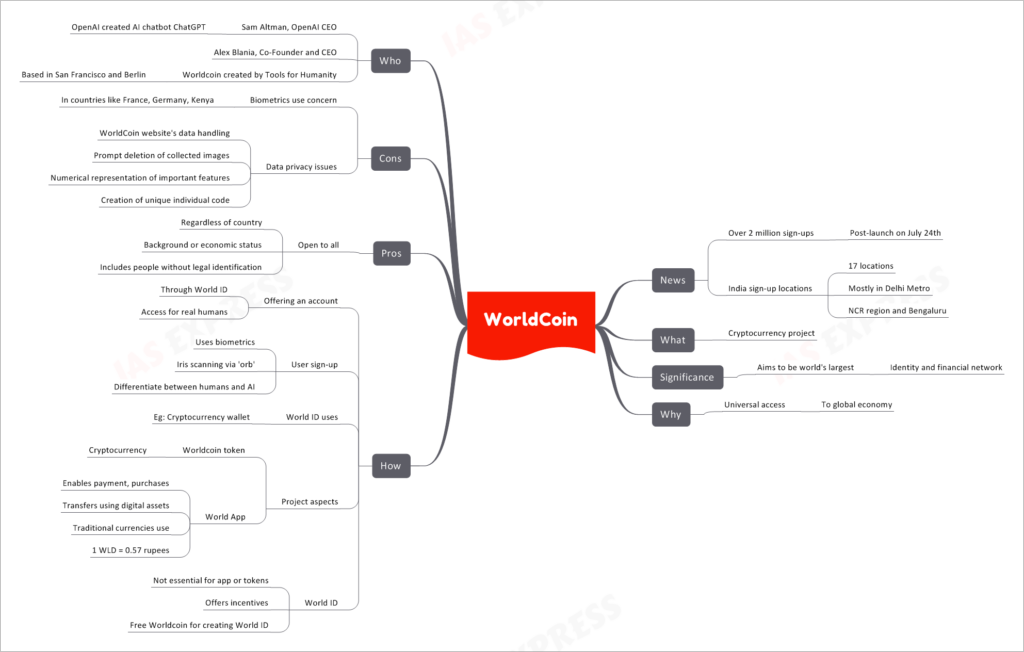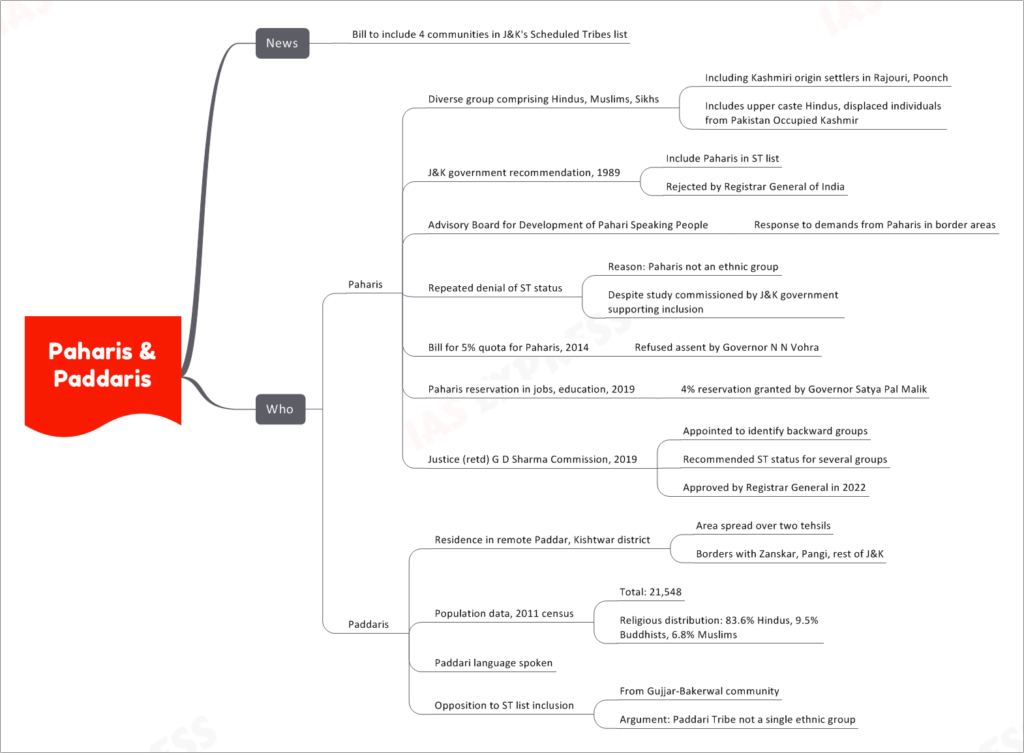[Newsbits] 01.08.2023

WorldCoin
WorldCoin is a cryptocurrency project that has gained significant attention since its post-launch on July 24th, attracting over 2 million sign-ups. The project aims to become the world's largest identity and financial network, providing universal access to the global economy through its World ID system. However, there have been both positive and negative aspects raised about the project, making it essential to delve into its various aspects.
What is WorldCoin?
- WorldCoin is a cryptocurrency project with a focus on creating a global identity and financial network.
Significance of WorldCoin
- WorldCoin aims to be the world's largest identity and financial network, revolutionizing access to the global economy.
Why WorldCoin?
- The project seeks to provide universal access to the global economy for everyone.
How WorldCoin Works
- WorldCoin offers an account through the World ID system, allowing real humans to access the platform.
- User sign-up is done using biometrics, including iris scanning via the 'orb' to differentiate between humans and AI.
- World ID is utilized for various purposes, such as creating a cryptocurrency wallet.
Project Aspects
- WorldCoin's native token is called "Worldcoin" and serves as a cryptocurrency.
- The "World App" enables payments, purchases, and transfers using both digital assets and traditional currencies, with 1 WLD equivalent to 0.57 rupees.
World ID
- World ID is not essential for using the World App or accessing WorldCoin tokens but offers incentives to users.
- Users receive free Worldcoin for creating their World ID.
Pros of WorldCoin
- WorldCoin is open to all, regardless of their country, background, or economic status, including people without legal identification.
Cons of WorldCoin
- The use of biometrics raises concerns in countries like France, Germany, and Kenya.
- Data privacy issues are raised concerning how WorldCoin website handles data, including the prompt deletion of collected images and creation of unique individual codes.
Key Figures
- Sam Altman, OpenAI CEO, is associated with the project, whose organization created the AI chatbot ChatGPT.
- Alex Blania is the Co-Founder and CEO of WorldCoin.
- Worldcoin is developed by Tools for Humanity, a company based in San Francisco and Berlin.
Conclusion
WorldCoin's ambitious goal of becoming the world's largest identity and financial network, providing universal access to the global economy, has attracted millions of sign-ups. However, there are concerns regarding biometric usage and data privacy that need to be addressed to ensure the success and acceptance of the project.
Lokmanya Tilak National Award
The Lokmanya Tilak National Award is an esteemed recognition bestowed on individuals who have made remarkable and extraordinary contributions to national progress and development. The Prime Minister was recently conferred with this prestigious award in Pune on the 103rd death anniversary of Bal Gangadhar Tilak.
Background and Establishment
- The award was established in 1983 and is presented annually on August 1, which marks the death anniversary of Lokmanya Tilak, a renowned freedom fighter and social reformer.
- The award aims to honor and uphold the legacy of Lokmanya Tilak and the principles he stood for.
Purpose and Criteria
- The Lokmanya Tilak National Award is intended to acknowledge outstanding contributions made by individuals towards the advancement and development of the nation.
Recipients
- The award has been presented to eminent personalities from various fields who have made significant impacts on the nation.
- The Prime Minister is the 41st recipient of this esteemed award.
- Previous recipients include distinguished personalities such as Shankar Dayal Sharma, Pranab Mukherjee, Atal Bihari Vajpayee, Indira Gandhi, Manmohan Singh, NR Narayana Murthy, and E Sreedharan.
Conclusion
The Lokmanya Tilak National Award holds great significance as it pays tribute to the efforts and contributions of exceptional individuals who have dedicated themselves to the progress and development of the nation, perpetuating the ideals and values advocated by Lokmanya Tilak himself.
Paharis and Paddaris
A Bill is being considered to include 4 communities- “Gadda Brahmin”, “Koli”, “Paddari Tribe” and “Pahari Ethnic Group” in J&K’s Scheduled Tribes list.
Paharis
- The Paharis are a diverse group comprising Hindus, Muslims, and Sikhs living in various regions, including Rajouri, Poonch, and displaced individuals from Pakistan Occupied Kashmir.
- The Jammu and Kashmir government recommended their inclusion in the Scheduled Tribes list in 1989, but it was rejected by the Registrar General of India.
- The formation of the Advisory Board for the Development of Pahari Speaking People was in response to demands from Paharis living in border areas.
- Despite a commissioned study by the Jammu and Kashmir government supporting their inclusion, Paharis have faced repeated denial of ST status, with authorities citing them as not an ethnic group.
- In 2014, a bill for a 5% quota for Paharis was refused assent by Governor N N Vohra.
- Finally, in 2019, Governor Satya Pal Malik granted 4% reservation to Paharis in jobs and education.
- The Justice (retd) G D Sharma Commission, appointed to identify backward groups, recommended ST status for several communities, including the Paharis, which was approved by the Registrar General in 2022.
Paddaris
- The Paddaris are residents of remote Paddar in the Kishtwar district of Jammu and Kashmir.
- The area is spread over two tehsils and shares borders with Zanskar, Pangi, and the rest of Jammu and Kashmir.
- As per the 2011 census, the Paddaris' total population was 21,548, with religious distribution of 83.6% Hindus, 9.5% Buddhists, and 6.8% Muslims.
- They speak the Paddari language.
- There has been opposition to including the Paddaris in the Scheduled Tribes list, particularly from the Gujjar-Bakerwal community, who argue that the Paddari Tribe is not a single ethnic group.
The struggles of both the Paharis and Paddaris for Scheduled Tribes status in Jammu and Kashmir highlight the complexities and challenges in recognizing diverse communities under this category. The inclusion or exclusion from the ST list carries significant implications for access to reservations, benefits, and recognition of distinct identities within the state.
Rules on Space Junk
Recently, the Australian Space Agency confirmed that identified debris was from an Indian Space Research Organisation (ISRO) rocket. This incident has highlighted the ongoing issue of space debris falling back to Earth, raising concerns about the potential threats it poses to life and property.
Nature of Space Debris
- Space debris falling back to Earth is a common occurrence, mostly consisting of small fragments from rockets.
- These debris fragments are capable of surviving atmospheric friction and can fall into oceans or occasionally wash up on shores.
- While smaller fragments are more prevalent, there have been rare instances of large debris re-entering the Earth's atmosphere, such as the Chinese rocket debris in the Indian Ocean in May 2021 and Skylab space station debris in western Australia in 1979.
Significance and Potential Threats
- Space junk, although seemingly insignificant, poses a significant threat to life and property.
- It can potentially endanger marine life and become a source of pollution in oceans.
- Larger debris may cause damage to property and infrastructure on Earth.
Legal Framework: Convention on International Liability for Damage Caused by Space Objects
- The Convention on International Liability for Damage Caused by Space Objects complements the Outer Space Treaty and addresses issues related to damage caused by space objects.
- The convention applies specifically to cases where falling space objects cause damage on Earth.
- According to the convention, the country that launches the space object is "absolutely liable" for any damage it causes.
- If the ISRO debris caused damage in Australia, India could be held liable, and Australia could potentially claim compensation.
Compensation Claims
- Compensation amounts resulting from damage caused by space objects are determined based on principles of international law and justice.
- In the past, there has been a single instance where the convention was enforced to claim compensation. Canada claimed 3 million Canadian dollars from the Soviet Union in 1978 after a Soviet satellite with radioactive substance fell in Canada.
Conclusion
The issue of space junk falling back to Earth poses a real threat to life, property, and the environment. It necessitates strict adherence to international conventions and cooperation among space agencies to minimize the potential risks and ensure that compensation is provided for damages caused by space objects.
Justice Rohini Commission
The Justice Rohini Commission is a four-member commission tasked with examining the sub-categorisation of Other Backward Classes (OBCs) in India. The commission was appointed on October 2, 2017, and its report has been tabled before the President.
Purpose and Motivation
- The commission's main objective is to address perceived distortions in the implementation of the affirmative action policy for OBCs.
- It aims to tackle the issue of certain castes within the OBC category disproportionately benefiting from the 27% reservation in central government jobs and educational institution admissions.
Key Figures
- The commission is headed by Justice G Rohini, a retired Chief Justice of the Delhi High Court.
OBC Reservation and Central List
- Currently, there is a 27% reservation for OBCs in central government jobs and educational institution admissions.
- The Central List of OBCs contains over 2,600 entries, encompassing various castes and communities eligible for reservation benefits.
Need for Sub-categorisation
- The perception is that a few affluent OBC communities are garnering the majority of benefits under the 27% OBC quota, leaving out other less privileged groups.
- Sub-categorisation is seen as a way to ensure more equitable distribution of reservation benefits among various OBC communities.
Supreme Court's Intervention
- In August 2020, a five-judge Constitution Bench of the Supreme Court revisited the 2005 decision in 'E V Chinnaiah vs State of Andhra Pradesh.'
- The 2005 ruling had disallowed the provision of special sub-quota within Scheduled Castes (SCs) and Scheduled Tribes (STs), arguing against benefiting more backward castes or tribes within these categories.
- The 2020 verdict in 'State of Punjab vs Davinder Singh' examined the validity of the 2006 Punjab law that created sub-classification within SCs, aiming to reserve half the SC quota for identified castes.
Timeline
- The Justice Rohini Commission was appointed on October 2, 2017, and has received 13 extensions to its tenure since then.
Conclusion
The Justice Rohini Commission's examination of sub-categorisation within the OBC category comes as a response to the need for more equitable distribution of reservation benefits. As the commission's report is tabled before the President, its recommendations will be crucial in shaping affirmative action policies for OBCs in India.
If you like this post, please share your feedback in the comments section below so that we will upload more posts like this.





